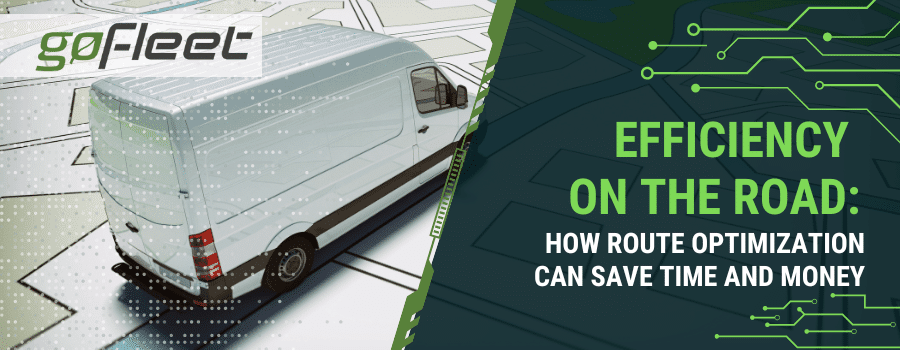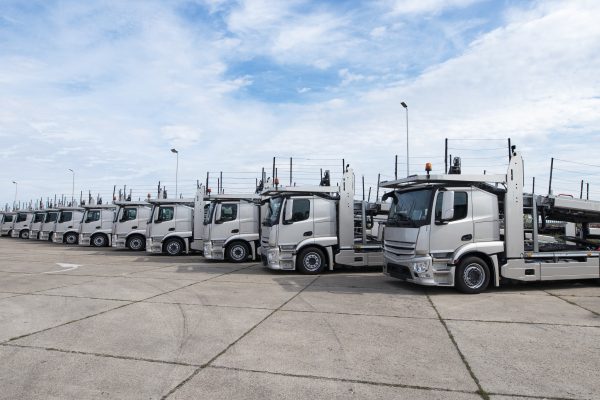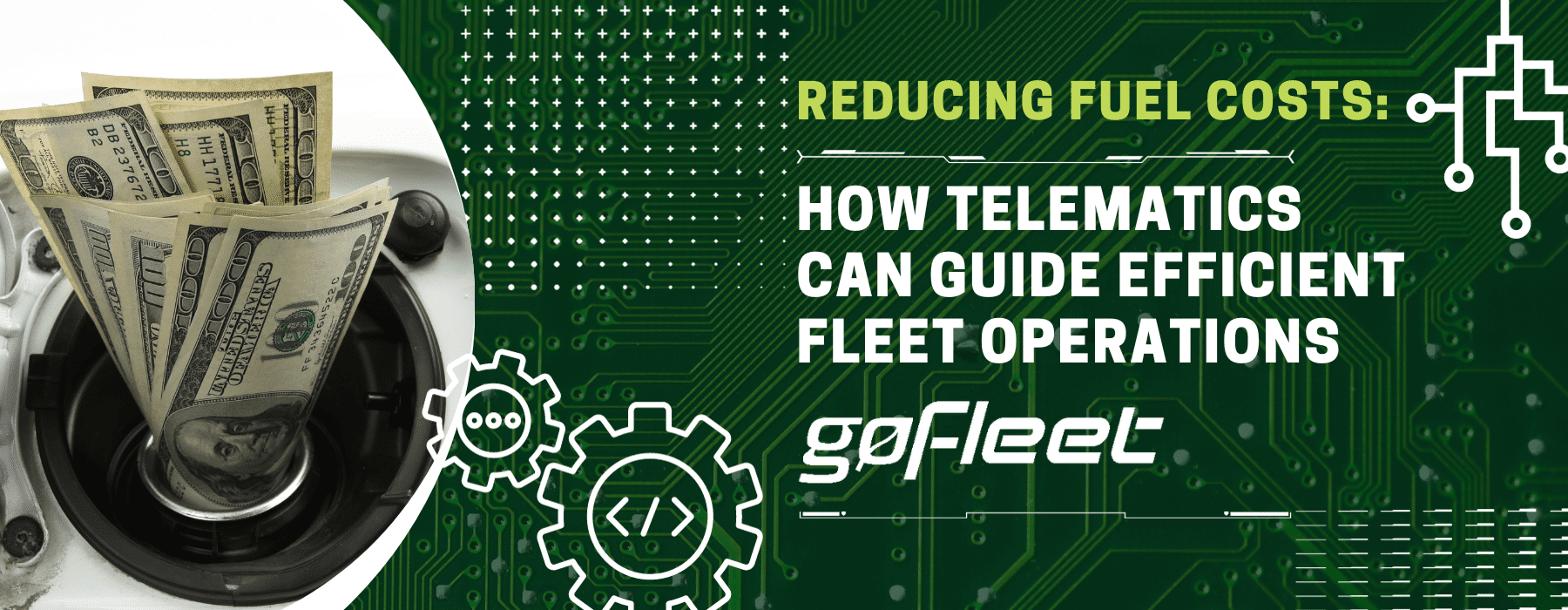Effective fleet management is essential for businesses to stay competitive and achieve operational excellence. At the heart of efficient fleet management lies truck tracking, the utilization of advanced technologies such as GPS tracking, telematics, and real-time monitoring to keep a close eye on the whereabouts, performance, and behavior of vehicles within a fleet.
Truck tracking has revolutionized the way fleet operations are managed, providing fleet managers with a wealth of valuable data and insights. By implementing tracking systems, businesses can gain real-time visibility into their fleet’s activities, enabling them to monitor vehicle locations, optimize routes, improve fuel efficiency, and enhance overall operational efficiency. With the ability to track and manage their fleet effectively, businesses can deliver goods and services promptly, maintain high customer satisfaction levels, and gain a competitive edge in the market.
While vehicle tracking offers numerous operational benefits, it is crucial to measure the Return on Investment (ROI) associated with implementing such solutions. Measuring the financial benefits is essential for fleet managers and business owners to make informed decisions about technology investments, justify expenditures, and allocate resources effectively. By quantifying the ROI of fleet tracking, fleet managers can evaluate the financial impact of the technology on their operations and determine its effectiveness in delivering tangible benefits.
Measuring ROI in logistics tracking goes beyond just tracking vehicles and collecting data. It involves analyzing the cost savings achieved through improved fuel efficiency, optimized routes, reduced maintenance expenses, and enhanced driver performance. Furthermore, it entails considering the indirect financial benefits such as better customer satisfaction, reduced delivery delays, and improved safety compliance.
In this blog, we will delve into the financial advantages of fleet tracking and explore how it contributes to the overall ROI for fleet management. By understanding the significance of measuring ROI in transportation monitoring, you will gain valuable insights that can assist you in making informed financial decisions and maximizing the benefits of implementing tracking systems within your fleet. So, let’s delve deeper into the realm of truck tracking and discover its financial implications for your fleet’s success.
Cost Reduction through Fuel Efficiency
The impact of truck tracking on fuel consumption
One of the significant expenses in fleet management is fuel consumption. However, with the implementation of fleet tracking solutions, businesses can experience substantial cost savings through improved fuel efficiency. Truck tracking enables fleet managers to closely monitor and analyze fuel consumption patterns, identify inefficiencies, and implement strategies to mitigate unnecessary fuel usage.
By tracking vehicles in real-time, fleet managers can gain valuable insights into driver behavior, such as excessive idling, aggressive acceleration, and speeding, which significantly contribute to increased fuel consumption. With this knowledge, targeted training programs can be developed to address these behaviors and promote fuel-conscious driving habits among drivers. Moreover, vehicle location tracking systems can help identify the most fuel-efficient routes, taking into account factors like traffic congestion, road conditions, and vehicle load, thereby optimizing fuel consumption across the fleet.
Real-time data insights for optimizing fuel efficiency
Transportation monitoring technology provides real-time data on various aspects that impact fuel efficiency. These solutions can monitor engine performance, vehicle speed, RPM (revolutions per minute), and other relevant parameters. By analyzing this data, fleet managers can identify underperforming vehicles or those requiring maintenance that can lead to suboptimal fuel efficiency. Timely maintenance interventions, such as addressing engine issues or replacing faulty components, can help ensure that vehicles operate at their peak fuel efficiency levels.
Furthermore, truck tracking technology can incorporate features like eco-driving alerts and feedback mechanisms that provide drivers with real-time notifications about fuel-efficient driving techniques. This immediate feedback empowers drivers to make adjustments on the road and optimize their driving behavior for better fuel economy.
Calculating cost savings and ROI from reduced fuel consumption
Reducing fuel consumption through vehicle tracking directly translates into significant cost savings for fleet operations. By accurately measuring fuel consumption before and after implementing tracking systems, fleet managers can calculate the cost savings achieved and determine the ROI.
To calculate the cost savings, fleet managers can consider factors such as average fuel price, average mileage, and the percentage of fuel reduction achieved through tracking technology. By multiplying the average fuel price by the reduction in fuel consumption and the number of vehicles in the fleet, it becomes possible to estimate the annual cost savings.
Measuring the ROI involves comparing the initial investment in truck tracking solutions, including hardware, software, and installation costs, against the calculated annual cost savings from reduced fuel consumption. This analysis allows fleet managers to assess the payback period and determine the financial viability of implementing fleet tracking technology in terms of fuel efficiency.
Operational Efficiency and Productivity
Enhancing fleet utilization through truck tracking
Transportation monitoring systems play a vital role in optimizing fleet utilization, ensuring that vehicles are utilized to their maximum potential. With real-time visibility into each vehicle’s location and availability, fleet managers can effectively assign jobs, allocate resources, and eliminate unnecessary downtime. By efficiently utilizing the fleet, businesses can increase their operational capacity without incurring additional costs.
Truck tracking technology also enables proactive monitoring of vehicle maintenance schedules. By tracking mileage, engine hours, and other relevant parameters, fleet managers can schedule preventive maintenance tasks and reduce the risk of unexpected breakdowns. This proactive approach minimizes vehicle downtime and maximizes fleet availability, ultimately enhancing operational efficiency.
Minimizing idle time and optimizing routes for improved productivity
Idle time is a significant contributor to reduced productivity and increased operational costs in fleet management. However, truck tracking can help mitigate this issue by monitoring and minimizing idle time. Fleet managers can identify excessive idling instances, understand the reasons behind them, and take necessary actions to address the problem. By reducing idle time, businesses can conserve fuel, extend the lifespan of vehicles, and increase overall productivity.
Moreover, vehicle location systems offer route optimization capabilities, ensuring that drivers take the most efficient paths to their destinations. By considering factors such as traffic congestion, road conditions, and customer locations, these solutions provide real-time route recommendations. Optimized routes not only save time but also reduce mileage, fuel consumption, and vehicle wear and tear. As a result, businesses can enhance productivity by completing more jobs in less time while reducing operational costs.
Measuring operational cost savings and ROI through enhanced efficiency
The enhanced operational efficiency achieved through truck tracking leads to tangible cost savings for fleets. By tracking and analyzing data related to fuel consumption, idle time, route optimization, and maintenance, fleet managers can quantify the operational cost savings resulting from improved efficiency.
To measure the ROI, fleet managers can calculate the reduction in operational costs, such as fuel expenses, overtime wages, and vehicle maintenance, as a result of implementing vehicle tracking technology. By comparing these cost savings to the initial investment in the tracking systems, fleet managers can determine the ROI and assess the financial benefits of enhanced operational efficiency.
Furthermore, measuring the impact of improved productivity on customer satisfaction and revenue generation is equally important. Enhanced operational efficiency enables fleets to fulfill more orders, meet delivery deadlines, and provide better customer service. Satisfied customers are more likely to become repeat customers and recommend the business to others, thus driving revenue growth.
Maintenance and Repair Cost Savings
Preventative maintenance and predictive analytics with truck tracking
Effective maintenance and repair management is essential for fleet operations to run smoothly and minimize costly breakdowns. Vehicle location offers valuable features that enable proactive maintenance and utilize predictive analytics to optimize maintenance schedules. By tracking vehicle performance data, such as engine diagnostics, mileage, and usage patterns, fleet managers can identify potential maintenance issues before they escalate into costly repairs.
With truck tracking technology, fleet managers can establish preventive maintenance schedules based on vehicle usage and manufacturer recommendations. This technology can automatically generate alerts and reminders for maintenance tasks such as oil changes, tire rotations, and filter replacements. By conducting regular preventive maintenance, fleets can minimize the risk of unexpected breakdowns, extend the lifespan of vehicles, and reduce repair costs.
Additionally, predictive analytics plays a significant role in maintenance management. Logistics tracking systems analyze vehicle data and identify patterns and anomalies that may indicate potential problems. By leveraging this information, fleet managers can proactively address issues before they cause breakdowns or expensive repairs. Predictive analytics empowers fleets to make data-driven decisions and optimize maintenance strategies, leading to significant cost savings.
Avoiding costly breakdowns and unscheduled repairs
Unscheduled breakdowns not only disrupt fleet operations but also result in substantial financial implications. With truck tracking solutions, fleet managers can monitor vehicle health indicators, receive real-time alerts for critical issues, and take immediate action to prevent breakdowns. Timely maintenance interventions can address minor problems before they escalate into major breakdowns, reducing the risk of costly repairs and associated downtime.
Fleet tracking also provides insights into driver behavior that can impact vehicle health. Excessive speeding, aggressive driving, and harsh braking can accelerate wear and tear on vehicles, leading to premature component failure. By identifying these behaviors through tracking technology, fleet managers can implement driver training programs and incentivize safe driving practices, thus reducing the likelihood of costly repairs caused by driver-related factors.
Calculating ROI from reduced maintenance and repair expenses
Reducing maintenance and repair expenses through truck tracking directly impacts the financial bottom line of fleet operations. By accurately measuring the cost savings resulting from improved maintenance management, fleet managers can calculate the ROI of their investment in tracking technology.
To calculate the cost savings, fleet managers can consider factors such as reduced repair costs, decreased downtime, and increased vehicle lifespan. By comparing the maintenance and repair expenses before and after implementing vehicle location solutions, fleet managers can quantify the cost savings achieved through proactive maintenance and avoiding breakdowns.
When calculating the ROI, fleet managers need to consider the initial investment in fleet tracking technology, including hardware, software, and installation costs. By comparing the cost savings to the investment, fleet managers can determine the ROI and evaluate the financial benefits of implementing tracking technology for maintenance and repair cost reduction.
Compliance and Penalty Avoidance
Ensuring regulatory compliance with truck tracking systems
In the world of fleet management, adherence to regulatory requirements is crucial to avoid penalties, maintain a positive reputation, and ensure operational efficiency. Truck tracking plays a vital role in helping fleets achieve and maintain regulatory compliance. These solutions provide tools and features that enable fleet managers to monitor and enforce compliance with various regulations, such as hours-of-service (HOS) rules, vehicle weight limits, and route restrictions.
Vehicle location systems can track driver activities, including driving hours, breaks, and rest periods, ensuring compliance with HOS regulations. Automated alerts and notifications can be set up to notify drivers and fleet managers when they are approaching their maximum allowable driving time, reducing the risk of non-compliance.
Additionally, fleet tracking solutions can integrate with electronic logging devices (ELDs) to automate and streamline compliance with HOS rules. ELDs accurately record and report driver hours, simplifying compliance management and reducing the potential for errors or falsifications.
Avoiding penalties and fines associated with violations
Failure to comply with regulatory requirements can lead to severe penalties, fines, and even license suspensions. Non-compliance not only disrupts fleet operations but also damages the reputation and credibility of the business. However, with truck tracking technology, fleets can mitigate the risk of violations and associated penalties.
By utilizing real-time tracking and geofencing capabilities, fleet managers can ensure that vehicles follow prescribed routes and avoid restricted areas, such as low emission zones or hazardous materials exclusion zones. Alerts and notifications can be configured to notify drivers and fleet managers if a violation occurs, allowing immediate corrective action to be taken.
Tracking systems also assist in managing driver behavior and promoting safe driving practices. Speeding alerts, harsh braking notifications, and other driver behavior monitoring features can help fleet managers identify and address behaviors that may lead to regulatory violations. By proactively addressing these issues, fleets can avoid penalties and maintain compliance with regulations.
Measuring ROI through penalty avoidance and compliance improvement
Avoiding penalties and fines associated with regulatory violations directly contributes to cost savings and improved financial outcomes for fleets. By implementing telematics tracking and maintaining compliance, businesses can protect their bottom line and allocate resources more effectively.
To measure the ROI, fleet managers can compare the costs of potential penalties and fines that would have been incurred without vehicle location tracking against the investment made in implementing the technology. By quantifying the avoided penalties and the associated costs, fleet managers can determine the ROI resulting from penalty avoidance.
Furthermore, truck tracking systems provide opportunities for ongoing compliance improvement. By analyzing data and identifying patterns of non-compliance, fleet managers can implement corrective measures, training programs, and policy changes to enhance compliance practices. Continual compliance improvement not only reduces the risk of penalties but also ensures smooth operations and a positive image in the industry.
Insurance Premium Reduction
Impact of truck tracking on insurance premiums
Insurance premiums can be a significant expense for fleet operations. However, implementing fleet tracking solutions can have a positive impact on insurance premiums. This technology provides valuable data and insights that demonstrate improved safety practices and risk mitigation, resulting in potential premium reductions.
Vehicle location tracking features such as driver behavior monitoring, real-time tracking, and accident detection. By tracking and analyzing driver behavior, fleet managers can identify and address risky driving habits, thereby reducing the likelihood of accidents and insurance claims. Real-time tracking enables efficient recovery of stolen vehicles, minimizing the financial impact of theft-related losses.
Insurance companies recognize the value of these risk-reducing features and may offer discounts or incentives to fleets that have implemented truck tracking technology. By providing evidence of the safety and risk mitigation measures enabled by tracking systems, fleets can negotiate lower insurance premiums and enjoy financial benefits.
Demonstrating improved safety and risk mitigation for insurers
Tracking technology provides robust data that showcases improved safety practices and risk mitigation efforts to insurers. This data includes driver behavior metrics, accident histories, and real-time monitoring capabilities. By sharing this information with insurers, fleets can demonstrate their commitment to safety and their proactive approach to risk management.
The data from truck tracking can highlight reduced instances of speeding, harsh braking, and other risky driving behaviors. This evidence can assure insurers that the fleet is actively working to minimize accidents and associated insurance claims. Real-time tracking and geofencing features can also demonstrate adherence to route restrictions and avoidance of high-risk areas, further showcasing the fleet’s commitment to risk mitigation.
By providing insurers with concrete data on improved safety and risk management practices, fleets can position themselves as lower-risk clients, potentially leading to more favorable insurance premiums.
Calculating financial benefits and ROI from reduced insurance costs
Reduced insurance premiums resulting from the implementation of truck tracking solutions directly impact the financial bottom line of fleet operations. Fleet managers can calculate the financial benefits and ROI by comparing the insurance costs before and after implementing tracking technology.
To calculate the savings, fleet managers need to consider the reduction in insurance premiums achieved as a result of improved safety practices and risk mitigation measures. By comparing the insurance costs prior to implementing tracking systems with the reduced premiums, fleet managers can determine the financial benefits resulting from reduced insurance expenses.
Calculating the ROI involves comparing the initial investment in fleet tracking against the cost savings achieved through reduced insurance premiums. By assessing the payback period and the overall financial impact of the reduced insurance costs, fleet managers can determine the ROI of their investment in tracking technology.
Enhanced Customer Service and Satisfaction
Real-time truck tracking for accurate ETAs and improved customer communication
Truck tracking systems provide real-time visibility into the location and status of vehicles, enabling accurate Estimated Time of Arrivals (ETAs) and improved customer communication. With real-time tracking, fleet managers can provide customers with precise information about the arrival time of their goods or services, reducing uncertainty and enhancing customer satisfaction.
By leveraging tracking data, fleets can proactively communicate any delays or changes in delivery schedules to customers. This transparency helps manage customer expectations and allows for efficient rescheduling or alternative arrangements, thereby minimizing dissatisfaction and improving overall customer experience.
Furthermore, real-time tracking allows customer service representatives to provide accurate and up-to-date information to customers regarding the status of their deliveries. This level of transparency builds trust and confidence in the fleet’s ability to deliver on time, fostering positive customer relationships.
Building customer trust and loyalty through transparency
Transparency is a key factor in building customer trust and loyalty. Truck tracking technology offers a level of transparency that reassures customers about the location and progress of their deliveries. By providing customers with access to tracking information, either through online portals or mobile applications, fleets can offer a sense of control and visibility, strengthening customer trust in the business.
Customers appreciate the ability to track their shipments in real-time, knowing exactly when to expect their goods or services. This transparency not only improves customer satisfaction but also contributes to customer loyalty. Satisfied customers are more likely to become repeat customers and advocates for the business, driving revenue growth and positive word-of-mouth referrals.
Exploring the financial impact of improved customer service on ROI
Enhanced customer service and satisfaction have a direct financial impact on a fleet’s ROI. Satisfied customers are more likely to continue doing business with the fleet, resulting in increased customer retention and repeat sales. They may also recommend the fleet to others, expanding the customer base and driving revenue growth.
Improved customer service can also lead to higher customer lifetime value (CLV). A positive customer experience increases the likelihood of additional sales, cross-selling, and upselling opportunities. Customers who have a high CLV contribute more significantly to the overall financial performance of the fleet.
Moreover, positive customer experiences and strong customer relationships can help the fleet differentiate itself from competitors in the market. This differentiation can lead to a competitive advantage, allowing the fleet to command premium pricing, win contracts, and secure long-term partnerships.
By considering the financial impact of improved customer service and satisfaction on the fleet’s revenue, customer retention, CLV, and market positioning, fleet managers can assess the ROI resulting from investing in truck tracking systems that enhance customer service.
Final Thoughts
Implementing truck tracking in fleet management offers a multitude of financial benefits and contributes to a positive Return on Investment (ROI). Throughout this blog, we have explored various aspects of vehicle location tracking and highlighted its impact on cost reduction, operational efficiency, compliance, insurance premiums, customer service, and satisfaction.
Truck tracking technology enables fleets to achieve cost savings through improved fuel efficiency, reduced maintenance and repair expenses, penalty avoidance, and potential insurance premium reductions. It enhances operational efficiency and productivity by optimizing fleet utilization, minimizing idle time, and optimizing routes. Moreover, fleet tracking supports regulatory compliance and mitigates the risk of penalties and fines. It also plays a pivotal role in delivering enhanced customer service, building customer trust, and fostering loyalty, leading to increased customer retention and improved financial performance.
As businesses navigate the dynamic landscape of fleet management, it is crucial to evaluate and measure the financial benefits that logistics tracking can bring to their specific operations. Each fleet has unique requirements and challenges, and by conducting a thorough analysis of potential cost savings and ROI, businesses can make informed decisions about implementing tracking systems.
Fleet managers and business owners should assess their fleet’s specific needs and consider factors such as fuel consumption, maintenance expenses, compliance requirements, insurance premiums, and customer service goals. By understanding the potential financial impact of transportation monitoring on these areas, businesses can determine the viability and value of investing in this technology.
Investing in a truck tracking solution is not just a short-term investment, but a strategic move towards long-term financial success. By optimizing fleet operations, reducing costs, and enhancing customer service, fleets can improve their competitiveness, increase profitability, and strengthen their position in the market.
As technology continues to advance and the demands of the industry evolve, staying ahead of the curve becomes imperative. Vehicle tracking offers a powerful tool to adapt to these changes, harness data-driven insights, and make informed decisions that drive financial success.
Evaluating and investing in tracking technology is an investment in the future of fleet management. The financial benefits it brings, combined with improved efficiency, compliance, customer service, and overall operational excellence, position fleets for long-term growth and prosperity in an increasingly competitive landscape.
Are you ready to maximize your fleet’s financial performance? Discover the untapped potential of vehicle tracking solutions and unlock a higher return on investment (ROI) today. Contact us to learn how our advanced tracking solutions can help you measure and optimize the financial benefits for your fleet. Don’t miss out on the opportunity to streamline operations, reduce costs, and boost profitability. Take control of your fleet’s ROI with truck tracking—reach out to us now!












